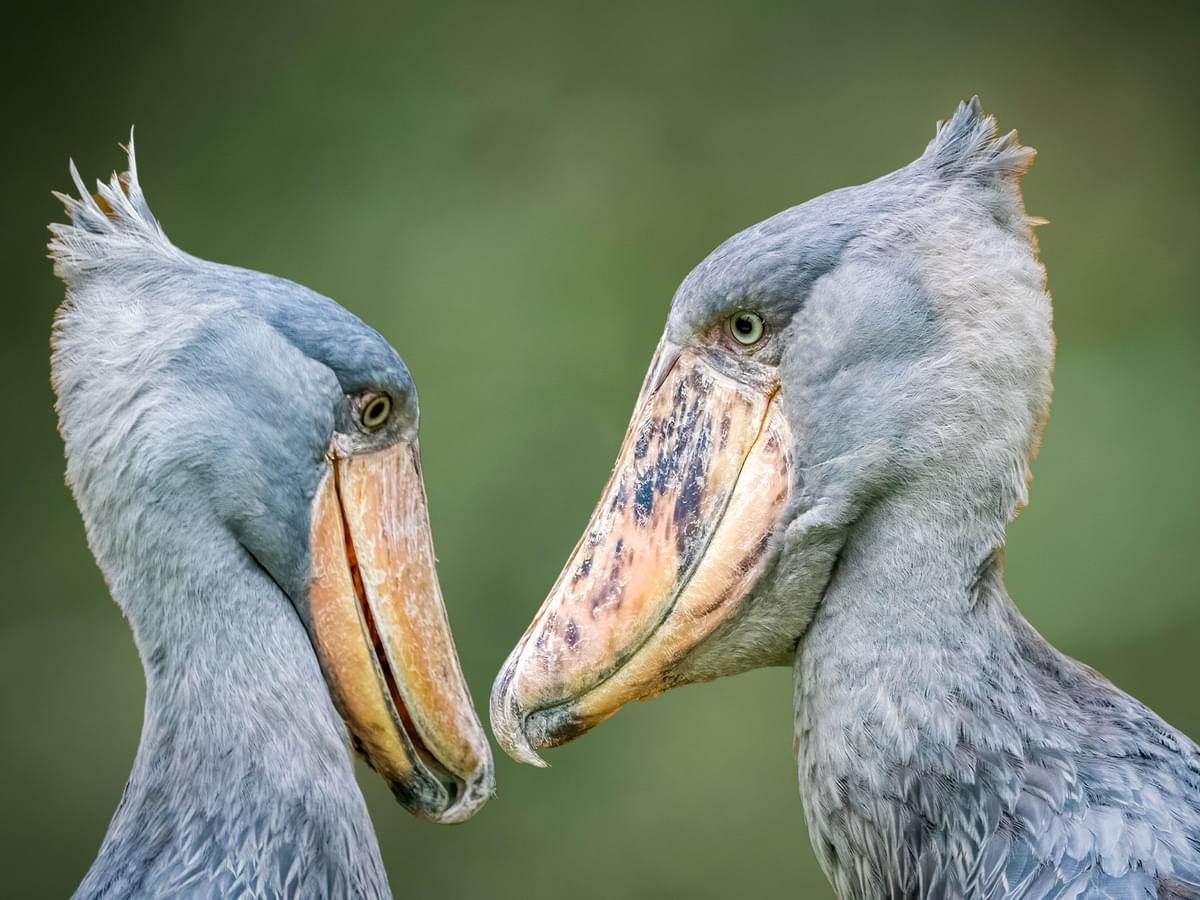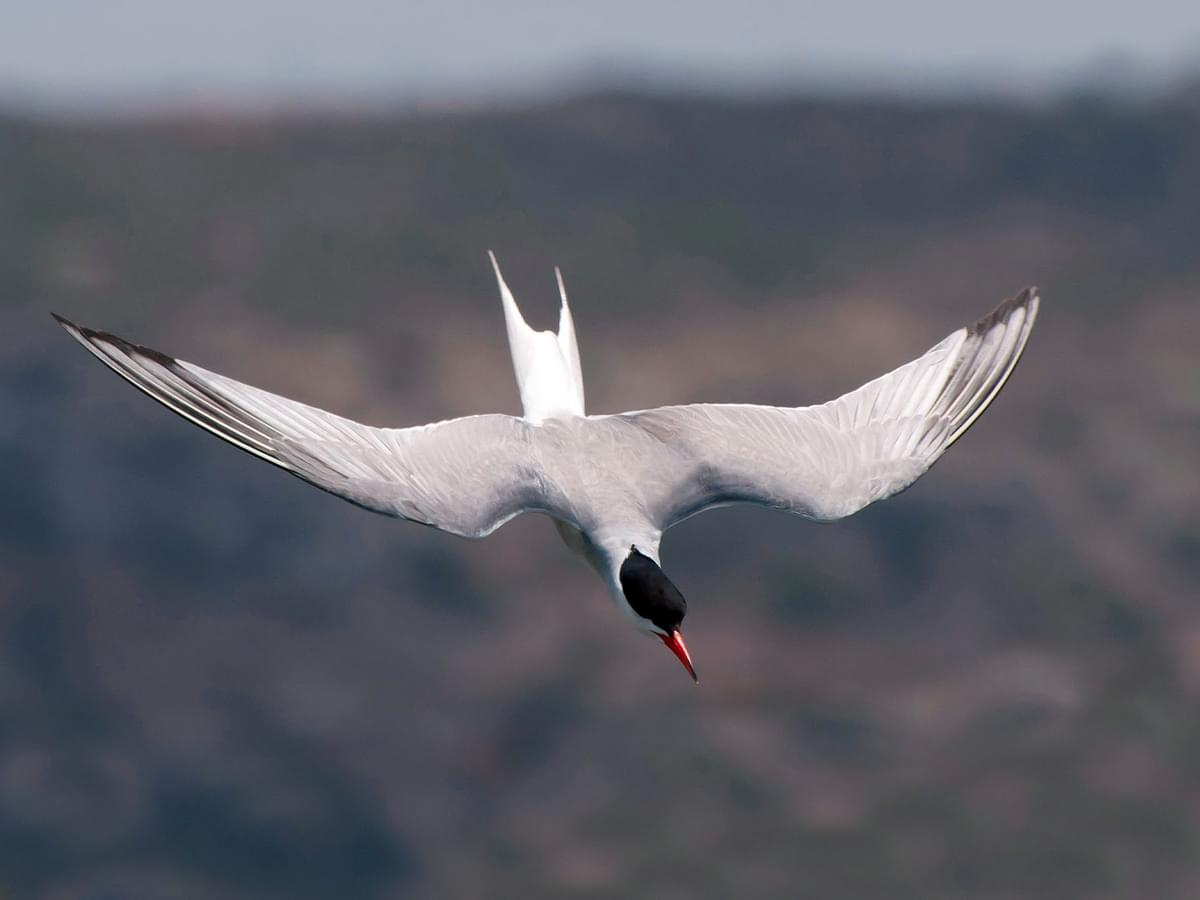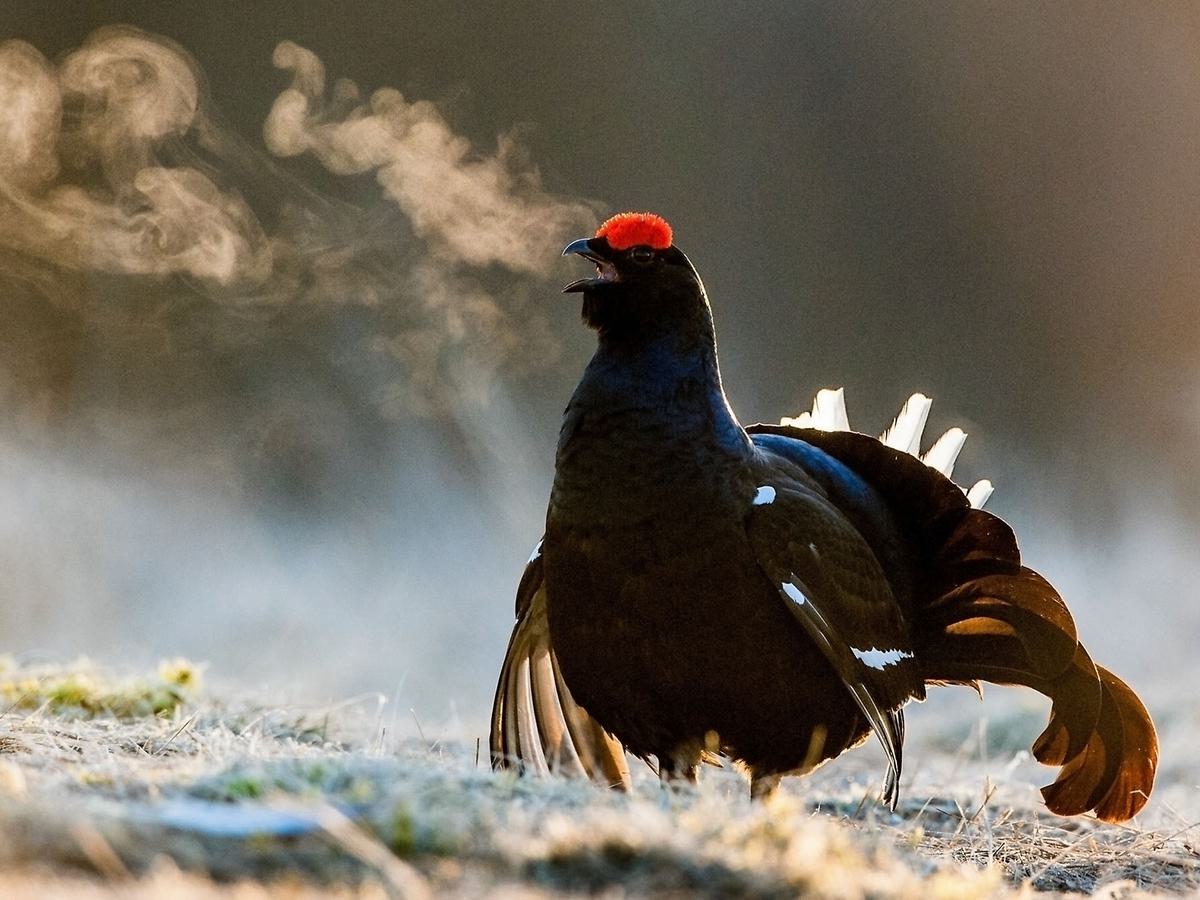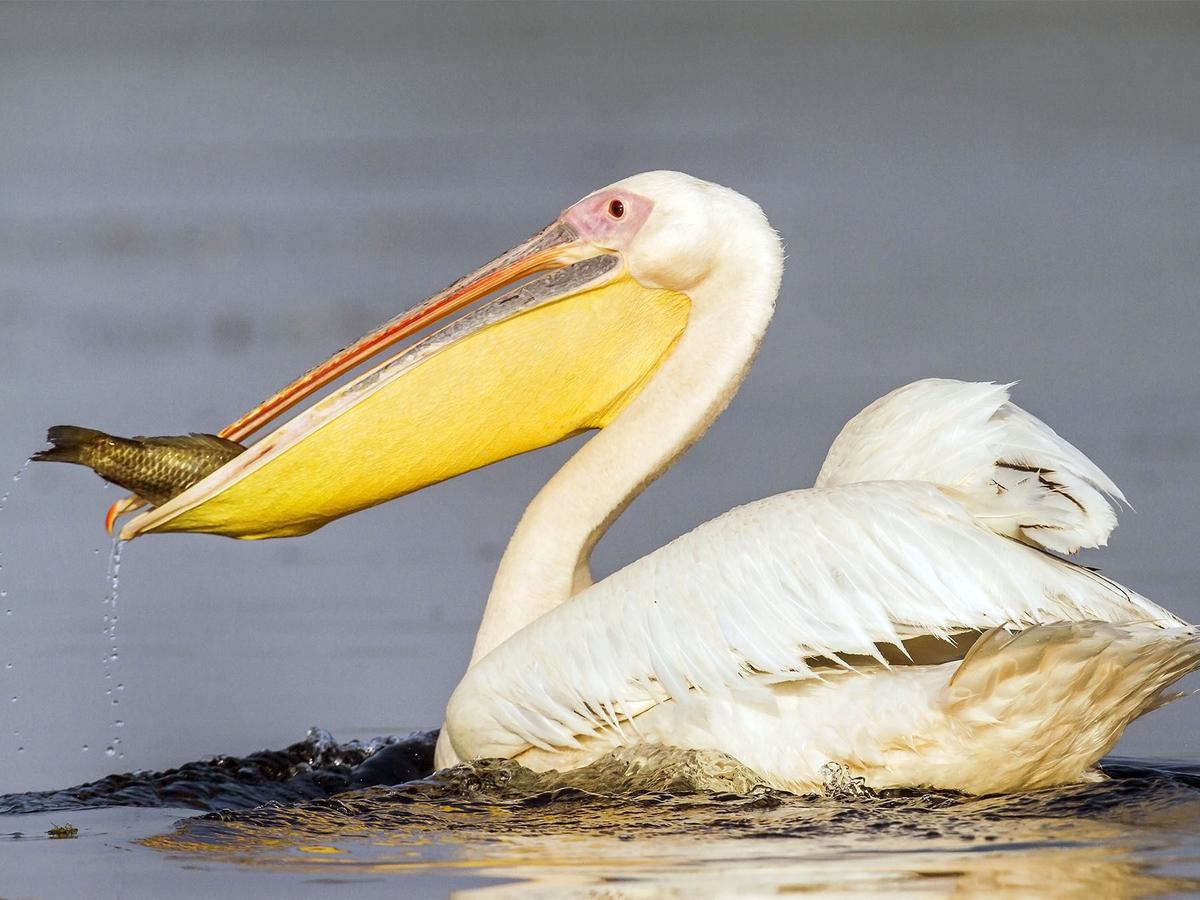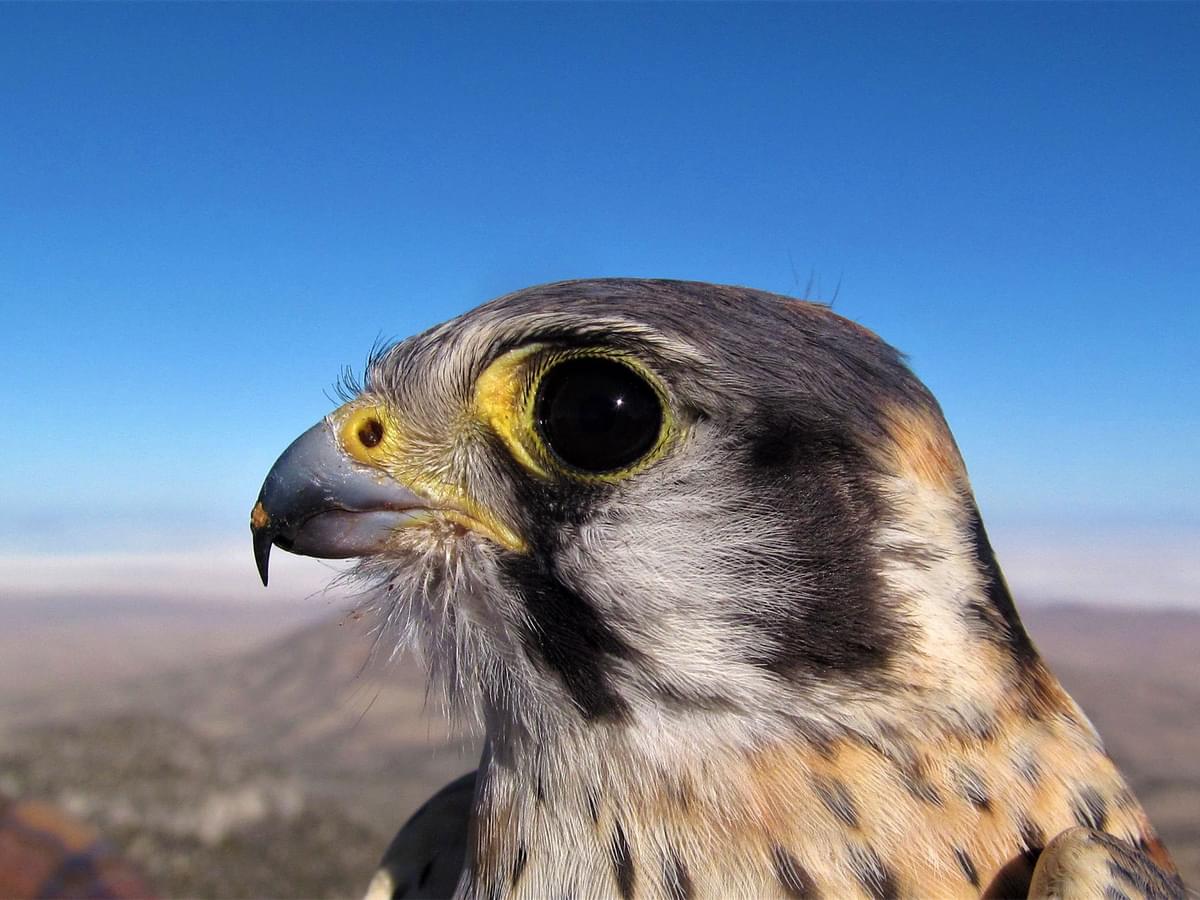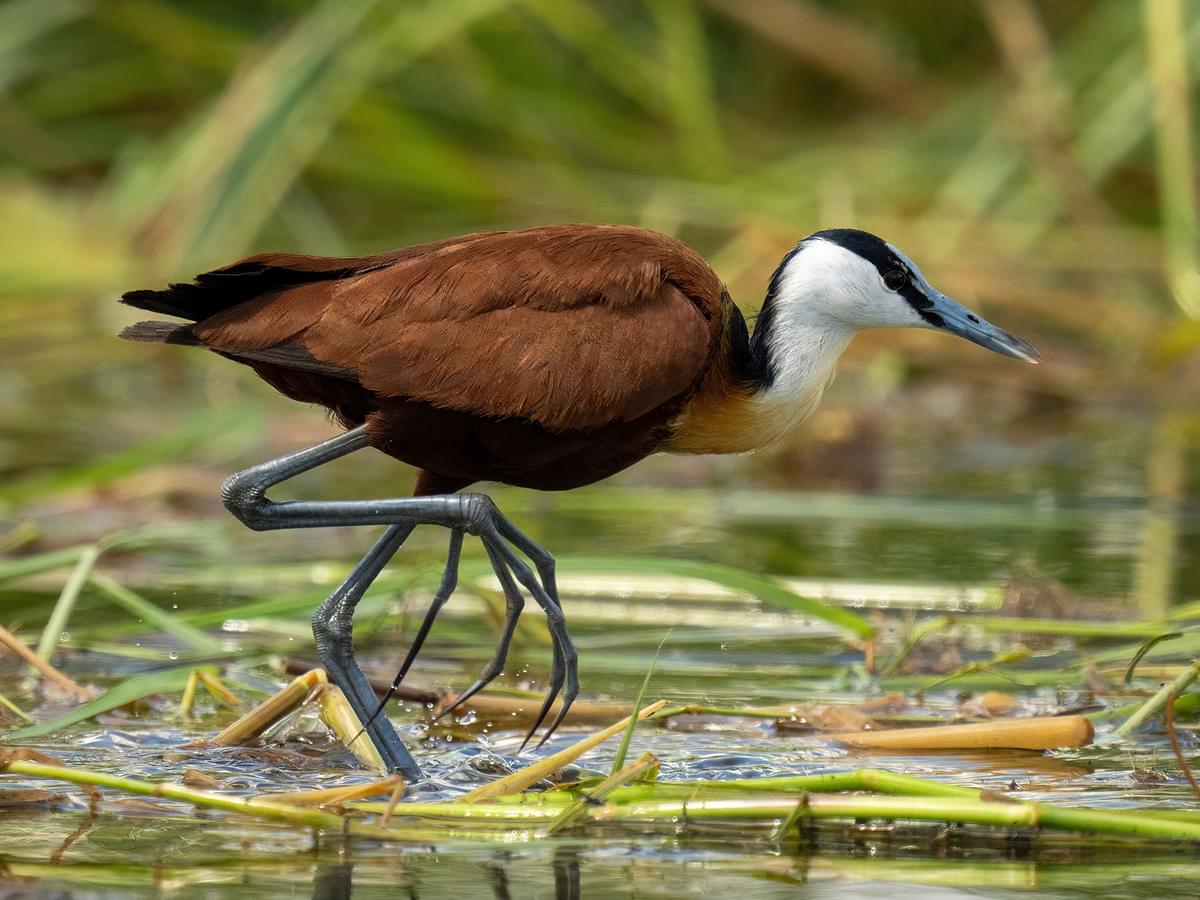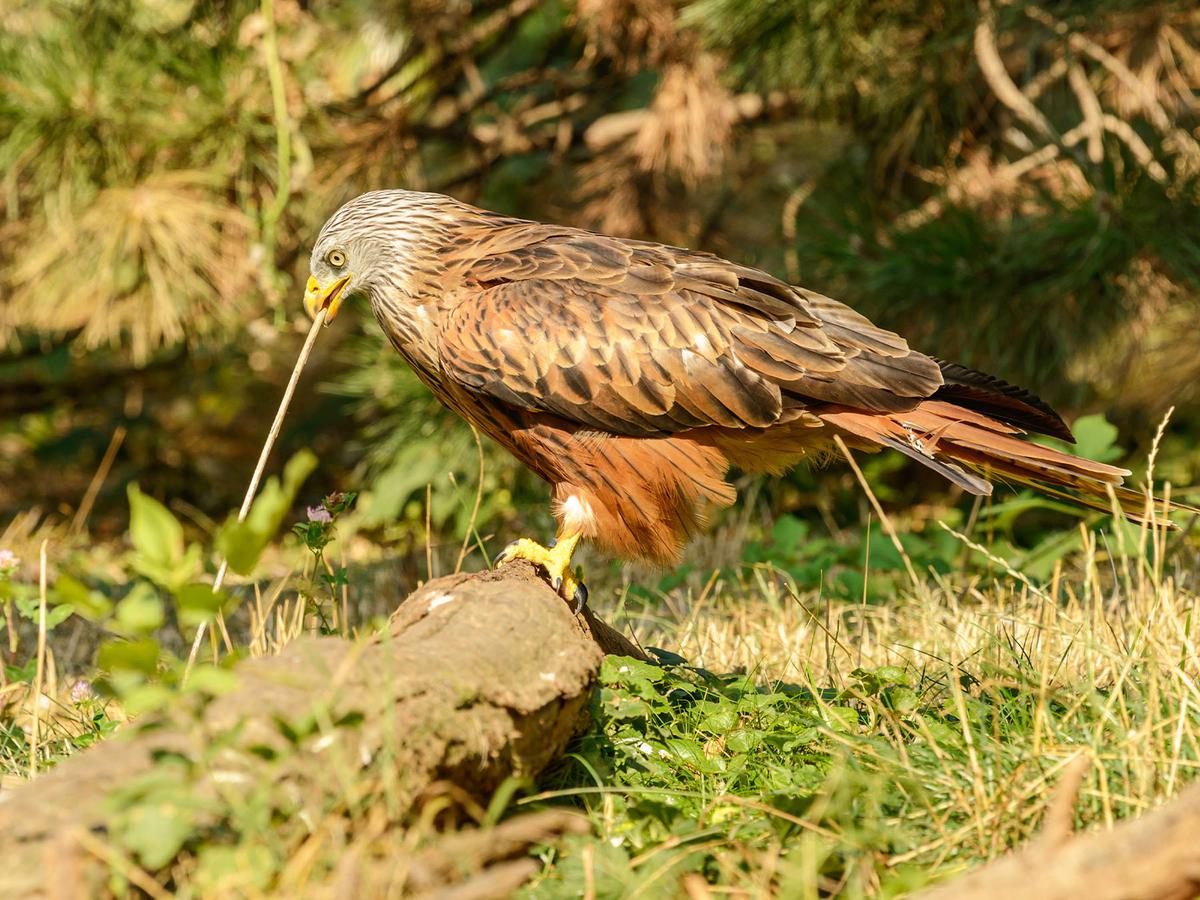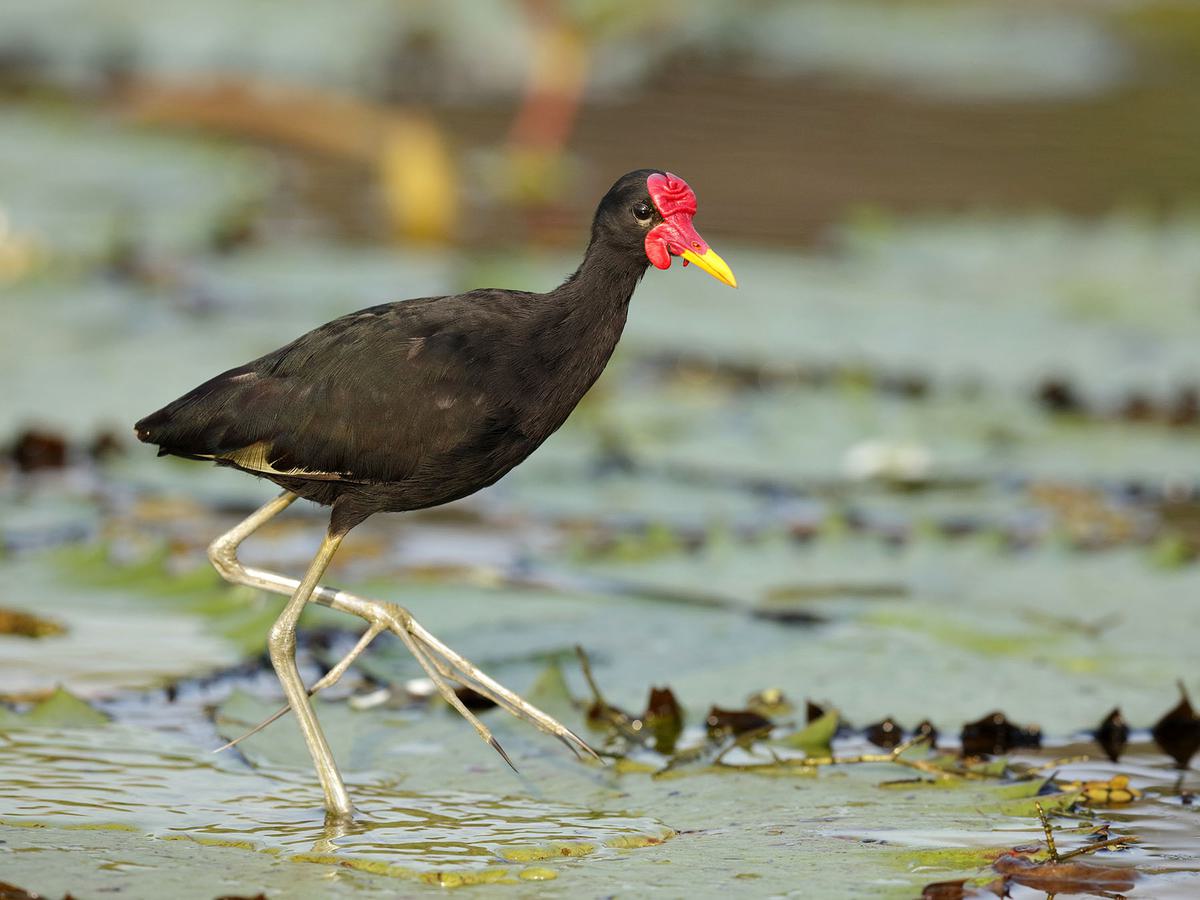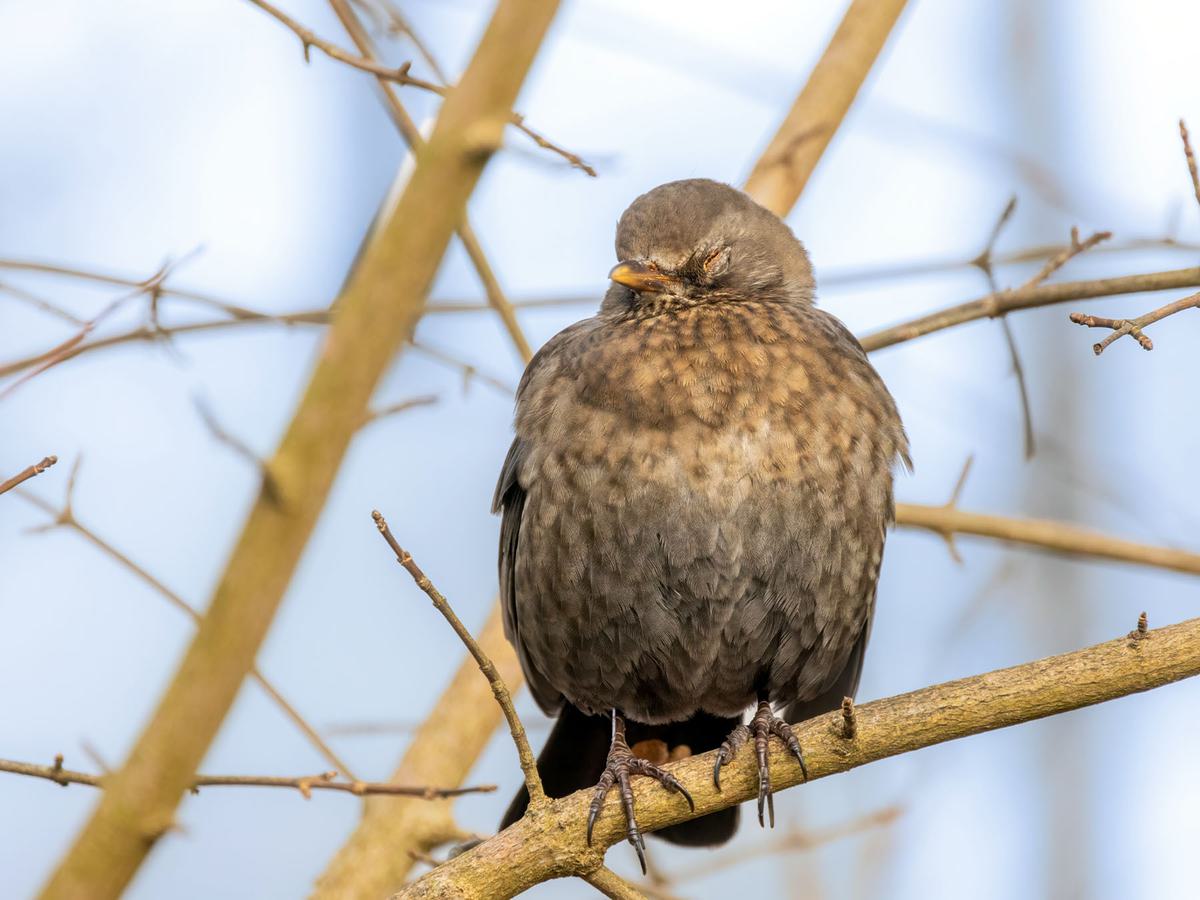Anatomy and Physiology
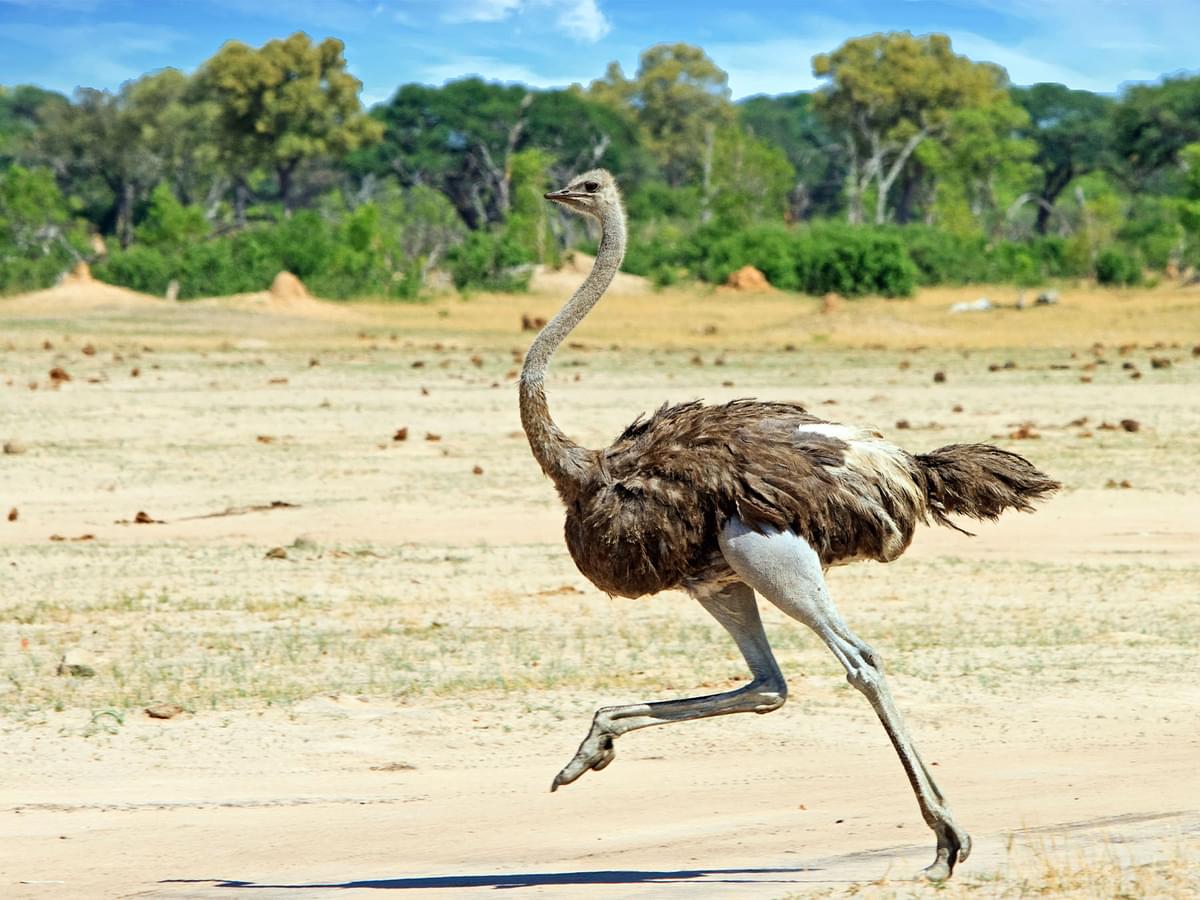
- The External Marvel: A Look at the Bird's Outer Body
- The Power of Flight: A Peek into the Musculoskeletal System
- Breathing the Avian Way: The Respiratory System
- Pumping Life: The Cardiovascular System
- Digesting the Bird Way: The Digestive System
- Brain, Senses, and Behaviors
- Reproduction and Continuation of Life
- Adapting and Surviving: Endocrine and Thermoregulation
- Summary
Despite their incredible diversity in shape, color, and size, most people find it easy to distinguish birds from other vertebrate classes like mammals and reptiles. The tiny, jewel-like Hummingbird is the most masterful example of bird flight and could hardly be more different from the massive, flightless Ostrich that sprints across the African Savanna. Yet, both are true avians.
We may share many similarities with our feathered friends, but their unique anatomy also makes them alien to us in many ways.
All birds are warm-blooded, and all have wings, beaks, feathers, and other defining avian anatomy. However, their diet, habitats, reproductive strategies, and many other aspects of their ecology have shaped their physical form in some pretty spectacular ways.
Understanding their anatomy and physiology teaches us more about their evolution and how they have adapted to survive and reproduce in ecosystems all over the world.
Would you like to learn more about avian anatomy and physiology? Here, we unpack the general body plan and functioning of birds to give you a broad but solid foundation on this fascinating and important topic. Let’s get started!
The External Marvel: A Look at the Bird's Outer Body
Feathers: Types, functions, and significance
The feather is a complex and highly specialized structure that is unique to birds. They are vital for flight, keeping warm or cool (thermoregulation), staying waterproof, and communicating a bird’s species, gender, and reproductive status.
In most species, these incredible growths cover the entire body except for the bill, eyes, legs, and feet. Birds maintain their plumage by bathing and preening. They regularly wash in water and dust and coat their feathers in secretions from their uropygial (preening) gland near the base of the tail. While all birds have feathers, not all feathers are alike.
Let’s take a closer look at some of the major feather types:
Down feathers
Down feathers are short, soft feathers that function to trap heat and keep birds warm. These feathers are not usually visible in adult birds because they are covered by other feather types.
Semiplume
Semi-plumes are similar to contour feathers, with an uncolored base and colored external portion. However, the barbs along the entire length of the shaft are fluffy and do not interlock to form a waterproof layer.
Contour feathers
Contour feathers form the outer layer over most of a bird’s body. These overlapping pigmented feathers are soft and downy at the base, but the barbs on the upper portion ‘zip’ together to form a more rigid, waterproof structure.
Remiges
Remiges are the stiff outer wing feathers used in flight. They are elongated, slightly curved, and asymmetrical in shape.
Rectices
Rectrices are the stiff feathers of a bird’s tail. Their primary function is for flight, although some birds develop long, ornamental rectrices to attract a partner.

A Gouldian Finch - The feather is a complex and highly specialized structure that is unique to birds
Beaks and talons: Diverse shapes for diverse functions
Birds do not have hands, so most species rely on their beaks/bills to feed and manipulate, lift, and carry objects like nest material. Bird beaks are highly variable in shape, depending on their function.
Eagles, for example, have sharply hooked beaks for tearing flesh, while Doves have delicate bills for picking up small seeds. You can tell a lot about a bird's diet by observing its bill shape, although avians also use their beaks for preening, carrying food, and building nests.
Colorations and patterns: Beyond mere beauty
Birds display a remarkable range of colors and patterns that are often unique to each species. Most birds have different plumage colors and patterns during their juvenile and immature life stages, but many are also sexually dimorphic as adults, with males generally the more colorful sex.
Colorful male birds have such showy plumage to attract females, but feather colors and patterns have other important functions for many birds. Drab and cryptically colored birds have the advantage of camouflage, which helps them go undetected by both their predators and prey.

A Black-faced Spoonbill - Bird beaks are highly variable in shape, depending on their function
The Power of Flight: A Peek into the Musculoskeletal System
Lightweight bones and their special design
Birds have had to evolve highly specialized anatomy for flight, and weight is one of the major challenges when defying gravity. Some of their bones have a core of air-filled spaces that are used for reducing weight and, remarkably, for breathing.
Flight muscles: Strength behind the wings
Flight requires incredible strength, stamina, and muscle speed. Birds flap their wings using powerful upper body muscles, which are attached to the keel, an extension of the sternum. The muscles used for the downstroke are called the pectoralis, while the supracoracoideus muscles complete the upstroke.
Tail feathers and their role in navigation
Birds use their tails for direction and speed control in flight. They can contract their tail feathers to reduce drag or fan them out to increase resistance, which is great for steering (tilted to the side) or slowing down to land (tilted down).

A Black-browed Albatross with wings spread getting ready to take-off
Breathing the Avian Way: The Respiratory System
Just like us, birds breathe in oxygen and breathe out carbon dioxide. However, the avian respiratory system is very different from our mammalian lungs.
Birds have two small lungs that allow air to pass through them and into a system of 9 to 11 thin-walled air sacs that connect to hollow bones. Each respiratory cycle consists of two inhales and two exhales. This highly efficient system is essential for the high demands of flight because it ensures maximum oxygen supply and removal of metabolic waste.
A bird’s efficient respiratory system allows high-altitude flight, which is important for soaring birds and many migrants. It’s also vital for the release of heat built up from body processes and physical activity.
Learn more about the Respiratory System of birds
Pumping Life: The Cardiovascular System
Birds breathe to take oxygen into their blood and remove waste products. For this exchange to work, they must have a way of circulating their blood around their body through various tissues and organs.
The heart is the pump that pushes and pulls blood through a network of capillaries, veins, and arteries. The avian heart is pretty similar to our own, although it is relatively large. Like the mammal heart, birds have four chambers, including two atria and two ventricles.
Flight requires a rapid exchange of oxygen and carbon dioxide, so many birds have remarkably high heart rates. Songbird hearts can beat at hundreds of beats per minute, and hummingbirds can reach well over a thousand beats per minute!
Learn more about the Circulatory System of birds

A Green-breasted Mango Hummingbird - Flight requires a rapid exchange of oxygen and carbon dioxide, so many birds have remarkably high heart rates
Digesting the Bird Way: The Digestive System
Birds have extremely varied diets, ranging from tough nuts and raw meat to soft fruits and liquid nectar. In each species, food is taken in through the bill and finally exits the body through the cloaca. Let’s briefly examine the journey of food through the avian digestive system.
The Crop
Birds do not have teeth, so they cannot chew their food. Instead, food passes directly down the esophagus and into a storage organ known as the crop. The crop allows birds to quickly collect large amounts of food and then process it in a safer area. The moist environment in the crop also helps to soften the food before it passes onto the next digestive organ.
The Proventriculus
Stored food passes through another section of the esophagus from the crop and into a chamber known as the proventriculus for chemical digestion. Here, enzymes and hydrochloric acid begin to break down the food.
The Gizzard/Ventriculus
Next, food is passed into a tough, muscular organ for mechanical digestion. The gizzard grinds up the food, often with the help of small stones swallowed by the bird.
The Small Intestine
After being broken down physically and chemically, birds can absorb the nutrients from their food. The final stages of digestion and absorption occur in the small intestine.
Ceca and Large Intestine
The indigestible remains of the bird’s food pass through these sections before being expelled through the cloaca. Excess water is reabsorbed in the ceca and large intestine for efficiency in keeping the bird well hydrated.

An adult Greylag Goose feeding with her chick - Birds do not have teeth, so they cannot chew their food. Instead, food passes directly down the esophagus and into a storage organ known as the crop
Brain, Senses, and Behaviors
The avian brain: Debunking the "bird brain" myth
Contrary to popular belief, birds have well-developed brains, and some are even capable of tool use and complex problem-solving. Through careful observation and scientific experiments, we now know that some species have the mental capacity of great apes, like chimpanzees or even young human children.
Continue reading to learn the basic functions of the avian brain.
Sensory perception
Regardless of their intelligence, all birds have excellent senses. Their vision and hearing are particularly fine-tuned, and the parts of the brain that process this sensory data are highly developed.
Cognition
Birds use sensory information to interpret their surroundings, memorize important information, and learn through observation and experience. Some birds show advanced memory and cognitive function in problem-solving and recollection tasks.
Involuntary functions
The brain is the body’s control center, responsible for balance and coordination, chemical regulation, and other involuntary process like the digestive and cardiovascular systems.

The Common Raven is considered to be among the world's most intelligent birds
How birds perceive the world: Vision, hearing, and more
Birds use their senses for everything from finding food and avoiding predators to finding a mate and communicating with other birds. Let’s take a closer look at how birds perceive the environment around them.
Vision
Birds have excellent eyesight, and like us, diurnal bird species have full-color vision. However, birds can also see light in the ultraviolet range, which allows them to detect colors and patterns that are invisible to us. Nocturnal birds detect fewer colors but can see in extremely low light.
Owls and other night birds have very large eyes with a high proportion of rods for detecting movement and a lower proportion of cones for distinguishing colors.
As strange as it sounds, some birds are thought to see the Earth’s magnetic field. We don’t know how this remarkable sense appears in their vision, but experiments demonstrate that migratory birds use this information for navigating between their breeding and overwintering grounds.
Most birds have eyes on the sides of the head, allowing a wide field of view to detect danger from almost any direction. Birds of prey have eyes located in the front of their face, allowing binocular vision for detecting prey. These hawk-eyed avians can see at long distances, and some even spot prey over a mile away (1.6km)!
Hearing
Despite lacking external ears, birds have excellent hearing for detecting prey and predators. Woodpeckers, for example, can hear grubs crawling within rotting wood, and Owls can locate their prey in complete darkness or hunt hidden rodents moving beneath vegetation or even snow.
Birds are highly vocal creatures that use calls and songs to communicate primarily with other members of their species but also with other birds and animals. Of course, effective vocal communication relies on their voice and hearing, and some birds communicate over distances of several miles.
Smell and taste
Although relatively undeveloped, birds certainly can smell and taste. The bird brain includes an olfactory bulb for processing chemical cues taken in by tastebuds in the bird’s mouth and tongue and from air taken in through the nostrils.
The sense of smell is thought to be most developed in birds like Turkey Vultures that feed on carrion and pelagic seabirds like Petrels and Shearwaters that can smell the oils from fish and other prey around fishing boats.

A White-tailed Eagle - Birds of prey have eyes located in the front of their face, allowing binocular vision for detecting prey
Reproduction and Continuation of Life
Birds are oviparous animals, which means they reproduce by laying eggs that contain an embryo that develops outside of the female’s body. This breeding strategy minimizes the time a bird must spend carrying their developing young but also requires an extended period of parental care.
Continue reading to learn more about bird reproduction.
Mating
Male birds fertilize females by transferring sperm to the female’s cloaca. Most males also have a cloaca and complete the transfer by means of a ‘cloacal kiss.’ However, the males of some birds, like Ducks, Geese, and Ostriches, have penises.
Egg Production
Female birds can produce eggs regardless of whether they have mated, although they will not develop unless fertilized with sperm. The egg begins its journey in the ovary before passing through the oviduct, where it is fertilized, provided with yolk, albumen, membranes, and finally, a hard calcium carbonate shell.
Incubation
The embryo within a fertilized egg is not ready to hatch for anything from 10 days to 12 weeks after the egg is laid. Bird’s eggs must be carefully nurtured and incubated during this crucial period if they are to survive.
One or both parents sit on their eggs to maintain a stable, warm temperature for development. Adult birds typically develop one to three bare patches of skin, known as brood patches, that effectively transfer body heat.

A pair of Gannets -Bird’s eggs must be carefully nurtured and incubated during this crucial period if they are to survive
Hatching
When the developing young bird is ready to emerge from its protective egg, it must break free all by itself. Baby birds develop a hardened structure on the tip of their bill, known as an egg tooth. They use this temporary tool to peck at the shell from the inside. Although the shell is thinner and weaker than when it was first laid, it is still a tough task for the chick, and it can take several hours to finally emerge into the outside world.
Early development
Baby birds hatch from the egg at varying stages of development. Precocial chicks are fully covered in down feathers, with open eyes and strong legs. These youngsters are ready to tackle the world from the get-go, and they will leave the nest with their siblings and mother to begin feeding themselves within about two days.
Altricial chicks, on the other hand, hatch as helpless, blind creatures that are completely reliant on their parents. They develop rapidly, however, and some small songbirds fledge the nest less than two weeks after hatching.
Parental Care
Baby birds rely on one or both of their parents for survival, regardless of whether a chick is precocial or altricial. Precocial chicks typically rely on their parents for body heat during early development, as they are not yet able to regulate their own temperature.
Altricial chicks are also brooded to keep warm or cool in the nest. These chicks must be fed by their parents, who may bring whole meals back to the nest or regurgitate softened and partially digested food for their young.

A European Eagle Owl feeding its young at the nest - Altricial chicks hatch as helpless, blind creatures that are completely reliant on their parents
Adapting and Surviving: Endocrine and Thermoregulation
The avian endocrine system
The endocrine system is a system of glands that produce hormones that control various bodily functions, from growth and metabolism to reproduction. The avian endocrine system is comparable to our own, although unique in many ways.
Read on to learn about bird glands and some of their essential functions.
- Pituitary gland - This gland stimulates other glands and controls metabolism, growth, and reproduction.
- Thyroid glands - These glands control body temperature regulation, metabolism, and growth.
- Parathyroid glands - Controls calcium metabolism
- Adrenal glands - Controls metabolism and blood pressure
- Pineal gland - Maintains the body clock to control rhythmic processes on a daily and seasonal basis
- Pancreas - Controls blood sugar
- Gonads - These glands produce sex hormones that regulate the reproductive system.
Thermoregulation
Birds inhabit diverse habitats, from the extreme cold of the Antarctic winter to the blistering heat of the world’s deserts. To survive these harsh conditions, birds must manage their body temperature (thermoregulate), and they do this through both involuntary functions and voluntary behaviors.
Bird feathers are highly effective for insulating against the cold, and their endocrine system manages the production of heat. However, they have many techniques for keeping cool or staying warm. Continue reading to learn about bird thermoregulation behaviors.
Keeping warm
- Birds often fluff out their feathers when it’s cold to trap a layer of warm air around their bodies.
- Birds tend to tuck their bills into their shoulder or breast feathers when resting to minimize heat loss from their bills.
- They can lose heat through their unfeathered limbs, so many bird species sleep or rest standing on one leg or drop down to insulate both legs with their feathers.
- Birds do not hibernate like some small mammals, although a few species can enter torpor for a few hours or days to slow their metabolism and reduce heat loss.
Keeping cool
- Birds will seek shade when it’s hot and also enjoy a cool bath if available.
- Birds cannot sweat like we do, but they still use evaporation to cool off. They do this by panting, a behavior you can observe when birds keep their beaks open on hot days.
- Some birds defecate (poop) on their own legs to keep cool through evaporation. This behavior is seen in long-legged birds like Storks.

A Willow Tit - Birds often fluff out their feathers when it’s cold to trap a layer of warm air around their bodies
Summary
From the beauty of a Hummingbird at a backyard feeder to the majesty of a swooping Bald Eagle, birds have the power to bring so much joy and fascination to our lives. More than that, we also rely on them for everything from their role in maintaining natural ecosystems to their value as a protein source for the human population.
Understanding their anatomy and physiology not only enriches our experience when observing birds but also helps veterinarians treat beloved pets, conservationists understand the habitat and nutritional requirements of threatened species and gives researchers fascinating insights into the evolution of life on earth.
We hope this guide has helped you understand the inner and outer workings of birds a little better. You might just look at birds a little differently after learning about their unique bodies!
Explore further
Anatomy and PhysiologyOn this page
- The External Marvel: A Look at the Bird's Outer Body
- The Power of Flight: A Peek into the Musculoskeletal System
- Breathing the Avian Way: The Respiratory System
- Pumping Life: The Cardiovascular System
- Digesting the Bird Way: The Digestive System
- Brain, Senses, and Behaviors
- Reproduction and Continuation of Life
- Adapting and Surviving: Endocrine and Thermoregulation
- Summary
